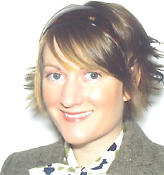Evolution of Hysteria
Abstract

Hysteria, once believed to be a disease of women and triggered by puberty, is the subject of Asti Hustvedt’s book Medical Muses. In 19th-century Paris, Jean Martin Charcot insisted that hysteria was a distinctive disease that caused real physical pain, thus making it a disorder of the nervous system, not the womb.
Charcot’s emphasis on clinical observation led to his most important medical discoveries at the Salpetriere. During his tenure at this “insane asylum,” he kept extensive dossiers for each patient that included histories, copious clinical notes, drawings, and handwriting samples. Hysteria for Charcot was like “a sphinx that defies anatomy,” and he focused on visually documenting the disease rather than on curing it.
Art became a method to immobilize the tumultuous fits of Charcot’s patients. Hysterical symptoms were reproduced at the Salpetriere in a number of ways—as staged reenactments, sketches, wax and plaster casts, and photographs. Blanche, Genevieve, and Augustine were his stars.
In the 1870s Charcot diagnosed these three women with hysteria. Hustvedt’s detailed descriptions of them allow modern psychiatrists to delve into the women’s pathology and speculate about their actual diagnosis. “Bizarre mood swings in which she would laugh one minute and cry the next,” for example, suggests a patient with an affective disorder. Others, who were possessed “demonically,” most likely experienced a psychotic illness. One of Charcot’s muses, who would “mortify her flesh by cutting her arms and amputating her nipple,” was likely suffering from borderline personality disorder.
Hustvedt’s book is well-researched and incorporates provocative sketches and photographs of patients with fascinating historical vignettes. Medical Muses provides a snapshot into the rich and controversial history of psychiatry that is sure to leave readers thankful for modern practices.
Helen M. Farrell, M.D., is an instructor at Harvard Medical School and a staff psychiatrist at Beth Israel Deaconess Medical Center in Boston.



